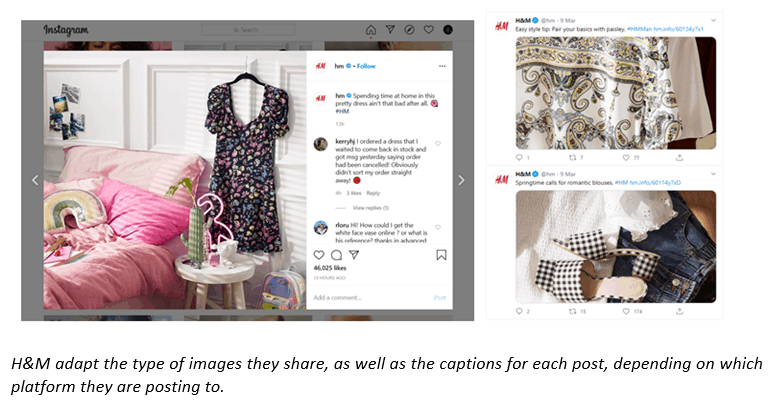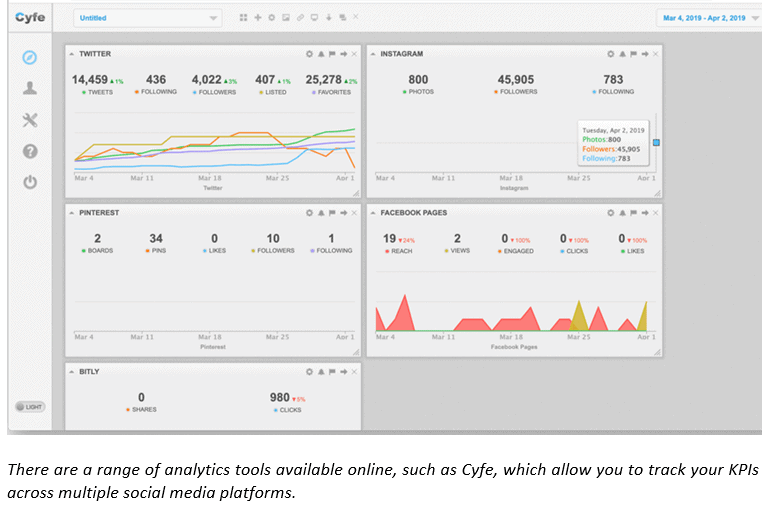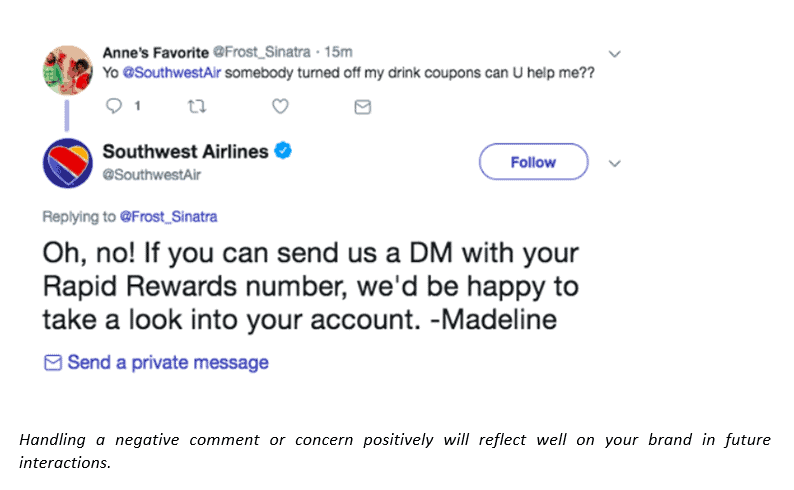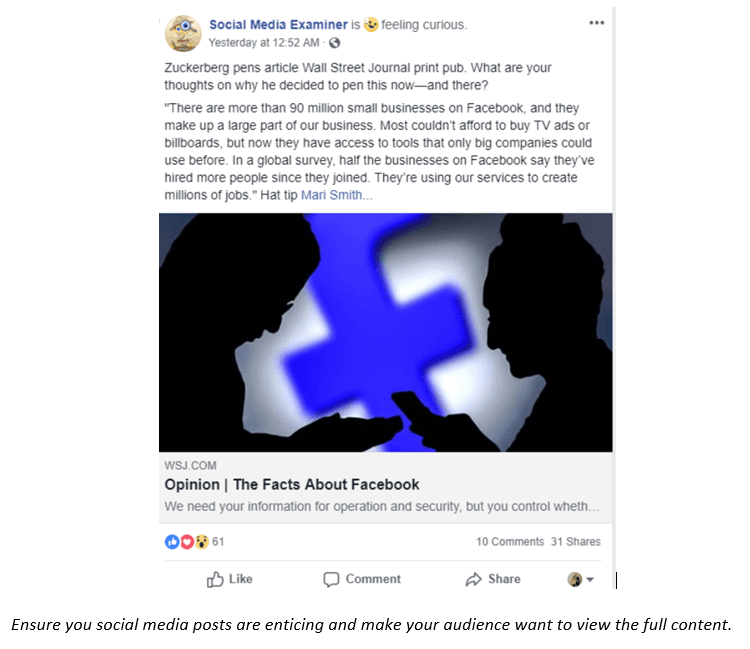Social media platforms have become one of the key grounds for marketing. They allow you to reach huge numbers of people in one simple post and to promote your brand, products and services.
However, in order to succeed and create a social media marketing strategy that keeps your audience engaged and growing, as well as increasing your conversion rates, you need to make sure you avoid these five common social media marketing mistakes.
[playht_player width=”100%” height=”175″ voice=”Mark”]
1. Cross-Posting Across Multiple Social Media Platforms
One of the most common social media marketing mistakes to make is to post the same content across multiple social media platforms or to repeat content on your account.
It might seem like a good time-saving idea, but in reality, it leads to poor posts and low engagement. After all, each platform has its own identify and different followers.
What your followers on Twitter expect is likely to be different to your Instagram followers. Cross-posting runs the danger of making your content seem thoughtless.
Instead, aim to create platform-specific posts each time by making small tweaks or adjustments to posts. Ideally you want to make sure that each post is optimized for the platform you are posting to.
One of the biggest errors to avoid is using incorrect image and video sizes or dimensions. Make sure that you use the medium most suited to each platform. For example, you might use a photo on a Twitter post, but a short video on your Instagram account instead.

You also need to make sure that you edit your posts before posting. Double-check for typos, broken links and relevant tags.
You want to avoid using the wrong tag for the platform. Make sure that you double-check you are using platform-specific accounts when you tag other people, otherwise you might lose the tag handle altogether and look as though you don’t know how to use the platform properly.
Above all, it’s important to understand each platform properly.
The type of content, tone, frequency of posts and best times to post all differ between platforms. Do your research and make sure that you schedule your posts for the most optimal times on each platform. Scheduling tools can be particularly helpful. Pay attention to your analytics too so as to get a better understanding of when your followers are engaging most with you and with which type content.
Remember, your followers want to engage with you meaningfully.
Share content that is valuable and makes them want to follow your call-to-action, whether that is to make a purchase, visit your website or read your blog. Ensure your CTAs are clear and that you use engaging and relevant captions to grab their attention.
The more tailored you make your content to each platform, the more people will want to engage with your posts.
2. Failing To Measure Your KPIs
When you’re using social media as part of your marketing strategy, it’s important that you measure your key performance indicators (KPIs) in order to assess whether your strategy is working and how to improve it further in the future. There are plenty of different analytics tools on offer that allow you to measure a range of social media KPIs.
However, the most important ones to focus on are engagement, reach and conversions.
Engagement is at the core of all social media marketing. This is the best measure of how well your marketing strategy is actually working. Increasingly, social media platforms themselves are paying more attention to engagement rates and prioritizing posts with greater levels of engagement, especially Twitter and Facebook.
Engagement refers to the ways in which people are interacting with your posts and content. Whether that’s through likes, clicks, shares or comments, the greater the engagement, the higher the likelihood that your message is actually reaching your audience.

Where large numbers of followers were once the measurement for a successful social media presence, now it is engagement. If you have a large following, but a low engagement rate this suggests that your content isn’t resonating with your audience and they aren’t that interested in it. On the other hand, a smaller following with lots of engagement is usually a reflection of great quality content and will be more likely to grow and generate leads organically.
The most effective forms of engagement are shares and comments.
Shares show other people, and the platform algorithms, that your content is of good quality and popular. On the other hand, comments show that people are interested in what you are saying. Even if the comments aren’t all positive, as long as they are generating discussion, they are usually a good indicator that your content is relevant to people.
“Your reach is important but it’s predominantly an estimate,” explains Beverly Lee, a social media manager at Nextcoursework and Australia2write. “It indicates how many people your post may be made available to, but doesn’t truly reflect how many people engaged with it.
However, it can be helpful to analyze your impressions and traffic data, particularly if your CTAs direct people back to your website. You want to make sure that you’re engaging enough people to generate leads and convert followers into customers.”
Analyze which platforms are generating the most leads and which are producing the least. This will help you to know which platform to focus your time and efforts into, as well as allowing you to get a better understanding of what type of content is most appealing to your customers.
3. Ignoring Or Deleting Negative Comments
Negative comments are a common feature of social media and something which you will need to learn how to deal with and manage. In most instances you will need to initially address them publicly. Simply ignoring or deleting negative comments isn’t an option. That’s a huge social media marketing mistake that some make.
The first thing you need to do is ensure that you have a clear external social media platform in which you clearly outline what you will and won’t accept and tolerate when it comes to comments. This includes what behaviors or actions will lead to comments being removed or deleted. Posting this policy somewhere on your website is especially helpful as it means that you can easily link back to it from any one of your social media accounts when there are negative comments that you need to address.
Having received a negative comment, how you handle it will be noted by your followers and the wider community. The first thing to learn is to not take it personally. Secondly examine the post carefully, including the language used, as well as the user who posted it. Try to establish what the intent behind the post was and importantly, whether or not the user is a troll.
“Genuine concerns should be addressed, but you want to avoid engaging with trolls. Those types of negative comments are designed to specifically bait you for their agenda and gain. Avoid engaging with trolls as the chances are, you’ll just end up getting into a drawn-out, pointless battle which is unlikely to do you any favors,” says Elizabeth Winner, a business writer at Britstudent and Write My X.
Where genuine complaints or concerns are raised, make sure you apologize and then try to steer the conversation off the public comments thread and onto a private channel. For example, asking the user to contact you via DM is quite effective and can make the exchange feel more personalized and responsive as a result. Another good alternative is to suggest they contact you via email.

4. Failing To Add A Human Touch
One of the dangers of social media marketing is that you run the risk of losing the all-important human touch.
The most successful social media marketing strategies and campaigns recognize the desire of audiences to connect. More and more people are valuing authentic connections and you are more likely to build a loyal customer base if you invest time and effort into nurturing these.
One important aspect to consider is your brand’s core values.
You want to remain true to these even as your brand evolves and grows. After all, it is this that made your followers start following you in the first place. Think carefully about the brand experience you want to create for them. Make sure that the content you post is authentic and connects with your audience in a meaningful way, adding value to them.
Be sure to engage with your followers.
If comments have been left on your posts, reply to them. Thank customers for their purchases, like and share photos and posts from your customers and followers in which you have been tagged. Not only will this show that you care about your customers, but it will also signal that you are actively interested in their feedback and interaction.
Ultimately, avoiding this social media marketing mistake this will help to create long-term engagement, build your credibility and support the creation of a loyal customer base.
5. Lack Of Diverse Content
Having created a marketing strategy, it can be tempting to simply ease into it and then coast along.
The trouble is, however effective your social media marketing strategy might be, over time you will need to refresh it in order to re-engage your existing customers and followers, ensure that they maintain their interest and excitement in your brand and to attract new followers too.
The most effective way to do this to vary the type of content you are sharing.
One of the most effective ways to do this is to repurpose old content. Video, for instance, is becoming ever more popular with audiences. Many people prefer to watch a video than read a blog. One way to diversify your content is to turn some of your existing blogs into videos. Consider sharing videos in which you give tutorials, share top tips or provide a fresh perspective on some of your existing content.
Another increasingly popular form is podcasts. Consider creating some short, easy to access podcasts where you offer tips and advice or where you interview other well-established companies or individuals within your industry.
Another popular avenue to explore is partnering up with another brand/individual and co-hosting or co-promoting podcasts and events. These can include workshops, conferences as well as webinars. Collaborating with another brand whose values align closely with your own can be a fantastic way to expand your customer base and increase your reach.
Whilst social media platforms generally promote short, immediate content, making more long-form content available to your following can also be a nice addition to your content strategy. This might be a lengthier blog article or even an e-book or handbook that your customers and followers can access and download.
The benefit of this more in-depth content is that it allows you to showcase your expertise in your field. Most of this content is likely to be shared on your website so consider how you will create appropriate and enticing captions on your social media accounts to direct followers and make them want to follow your call-to-action.

A final point to consider is whether you need to expand your social media presence. Make sure that you understand your target audience thoroughly, including which social media platforms they tend to use most frequently. Assess whether there are any other platforms that you should be using and if so, create an account. This gives you another opportunity to diversify the type of content you share.
Avoiding Social Media Marketing Mistakes
Social media marketing can be extremely effective when done carefully and consciously. However, in order for it to succeed you need to invest time and effort and try to avoid these social media marketing mistakes.
Make sure that you use analytics to help you understand your target audience and ensure that you are using the most relevant platforms. Remember to make the most of the differences between platforms by focusing on different aspects of your content on each platform, playing to the strengths of each one.
Above all create authentic content that audiences will want to engage with and which will add value to them. Encourage comments and discussions and make sure that you too engage and respond to your community.
[starbox]
